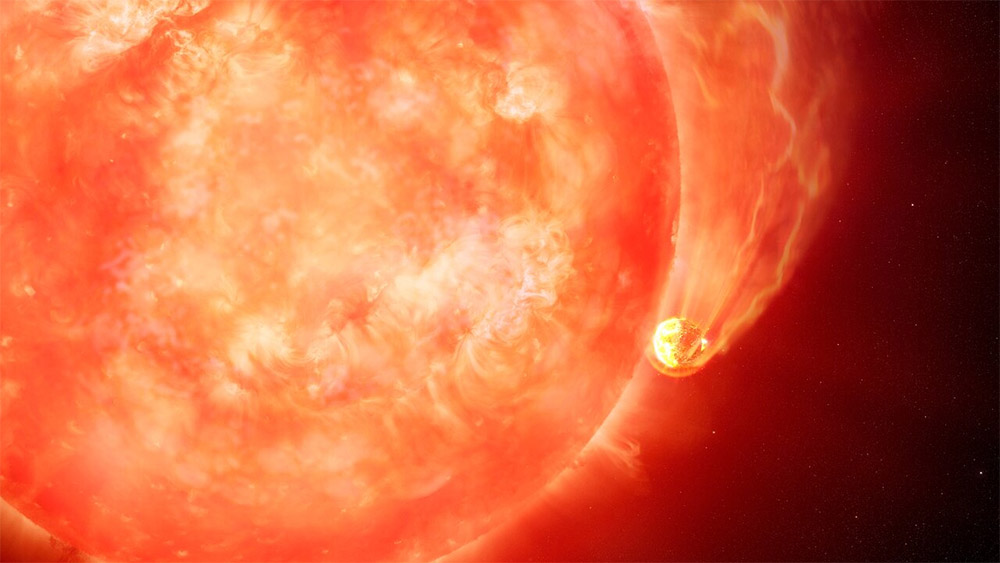Watch out, Earth! A Dying Star Just Ate A Planet
For the first time astronomers found direct clues of a dying sun-like star eating an exoplanet. Using the NSF NOIRLab’s Gemini South Telescope in Chile, researchers observed a long burst coming from the star, low in energy – a telltale sign of a planet swimming along near the star’s surface.

The ‘long and low’ stellar outburst took place in our Milky Way nearly 13,000 light-years away from our Earth. So why should planets like Mercury, Venus (and Earth!) be worried? Let’s find out!
Stars like our Sun grow up by combining Hydrogen atoms in their hot and dense bellies (the core) to form Helium, in a process called nuclear fusion. This internal process allows the star to be steady and not crushed by the weight of its outermost layers. When its core runs out of Hydrogen, the fusion reaction begins to shift to the star’s outer layers, causing the layers to expand and grow bigger. The Helium in the core now begins to fuse, turning into Carbon, and the star eventually grows into a red giant.
In about 5 billion years, our Sun will become a red giant! Our parent star will grow so big as it dies, that it will eat up the inner planets of our Solar System – including our planet Earth! Such dramatic star-planet meet-ups can display a magical outburst of energy and materials, causing planets to derail from their orbit and fall into the star. Astronomers just captured one such event ‘live in-action’.
It is quite challenging to tell apart a planet-gulping event, like the one astronomers saw ( called ZTF SLRN-2020), from solar flares or coronal-mass ejections. Thanks to the optical technology in the Gemini South telescope, it provided essential data by which researchers could confirm that their real-time observations were indeed that of a ‘planetary-engulfment’.
With these results in hand, astronomers can now use improved techniques to look for similar events in the cosmos. This will help find the missing link in understanding what really happens during the final stages of planetary systems like our own.
Cool Fact:
The ‘long and low’ stellar fireworks lasted for 100 days. Astronomers calculated that the ejected material from the burst is made of Hydrogen that weighs 33 Earth masses – and the dust weighs a third the mass of our planet. The team also estimated that the star in this event weighs almost twice the mass of our Sun and the planet it ate could weigh up to 10 times the mass of Jupiter!
This Space Scoop is based on a Press Release from NOIRLab.
Source: Space Scoop
🇵🇹 Versão portuguesa disponível neste site


Leave a Reply